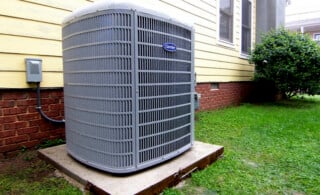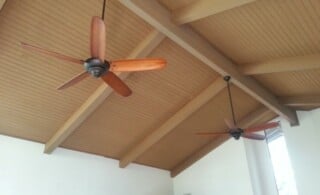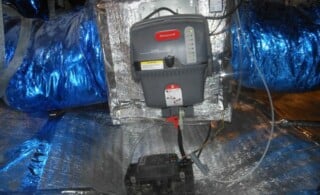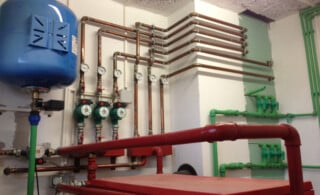
Duct systems are channeled throughout a home in order to circulate the air supplied by your heating and cooling (HVAC) units. In order to help maintain the temperature of this channeled air, these ducts must be insulated at all times. Most of the time this is already taken care of if they reside in conditioned parts of the house (such as your walls), however in unconditioned areas (such as floors and ceilings), they may need additional help. If they are not properly sealed and insulated, you are risking energy loss through leaks, temperature drops, and condensation build-up.
Energy Loss
If you don’t have appropriate insulators, the air in the ducts can’t maintain a regulated temperature. In other words, if the air in the ducts cools off, instead of heating your house, these channels could be blowing out cold air. Plus, ductwork insulation prevents any condensation from forming: if you have cool air passing through warm areas of your home, moisture may form on the surfaces of the ducts. This can create damage, mold, and further inefficiency. So if you want to save 25-35% on your utility bills, look into protecting all your ducts.
Prep Steps
Before installation, you must hire a contractor to inspect and repair all possible duct leaks. Leakage accounts for most energy inefficiency because it reduces air velocity (the better the air velocity, the better the temperature control). Many contractors cover the leak with a material called mastic, which can be brushed onto the duct and then left to dry for a day. Metal-backed tape can also used, along with aerosol sealants for those hard to reach areas. Traditional duct tape will not work because it can’t withstand extreme temperature fluctuations and will eventually fall off.
Ready to start your Ductwork Project?
Find ProsInstallation
Next, a qualified contractor is trained to correctly install the ductwork insulation, and they will have extensive knowledge in the type of material that should be used. All ductwork insulation should have at least an R-rating of 5, and it is often available in two forms:
Fiberglass: Just like walls, fiberglass is often used to line ducts. It tends to be less expensive, easier to install and replace, and it can absorb noise from your HVAC system. Since the fiber material is placed directly against the duct (with a foil side faced out), it helps control temperatures and therefore should prevent condensation. However, if moisture does occur, this fiber will get wet and become packed (which will make it lose its protective potential). Also, wet fiberglass can absorb mold and possibly house insects so it has to be kept dry and inspected often.
Loose Fill: Loose fill can be used but comes with the same pros and cons of fiberglass. (It can’t be made of cellulose due to safety issues)
Duct Wrap: This form is much more efficient because it is lightweight, is easy to install if you have the proper qualifications, is environmentally safe, and, compared to fiberglass, it takes less material to achieve the same R-value. This product is made of bubble-spaced foils that contains no fibers and reflects natural radiation (keeping air warmer in the winter, cooler in the summer). And because it is never directly touches the duct, it won’t retain any condensation that may form.
 Air Conditioner Condenser Coil Costs, Repairs & Replacements
Air Conditioner Condenser Coil Costs, Repairs & Replacements  Ceiling Fan Installation
Ceiling Fan Installation  Whole House Humidifiers
Whole House Humidifiers  Choosing Green: Boilers and Radiator Heating Systems
Choosing Green: Boilers and Radiator Heating Systems  Air Conditioner Covers
Air Conditioner Covers 

Are You Familiar With This Topic? Share Your Experience.